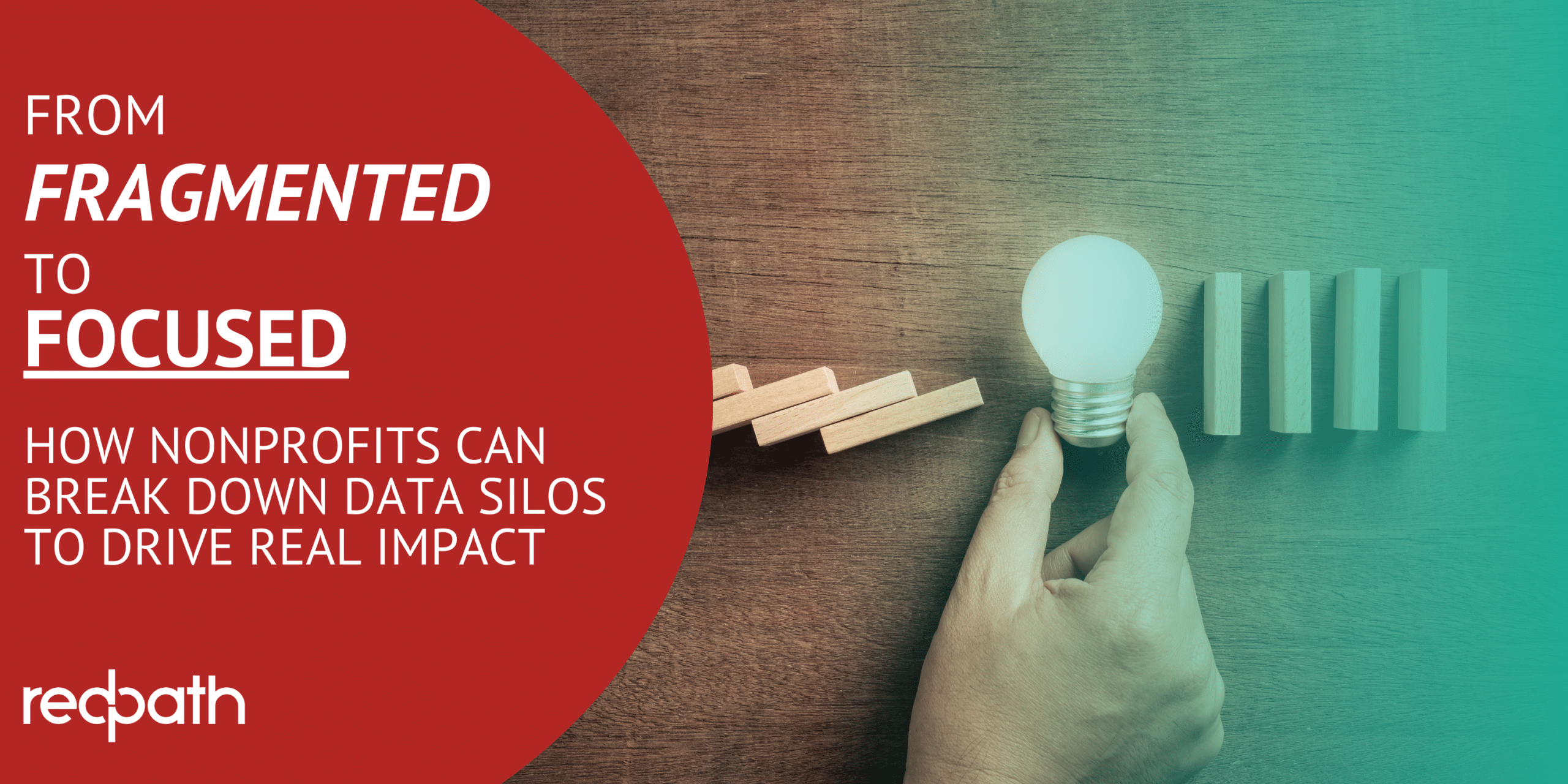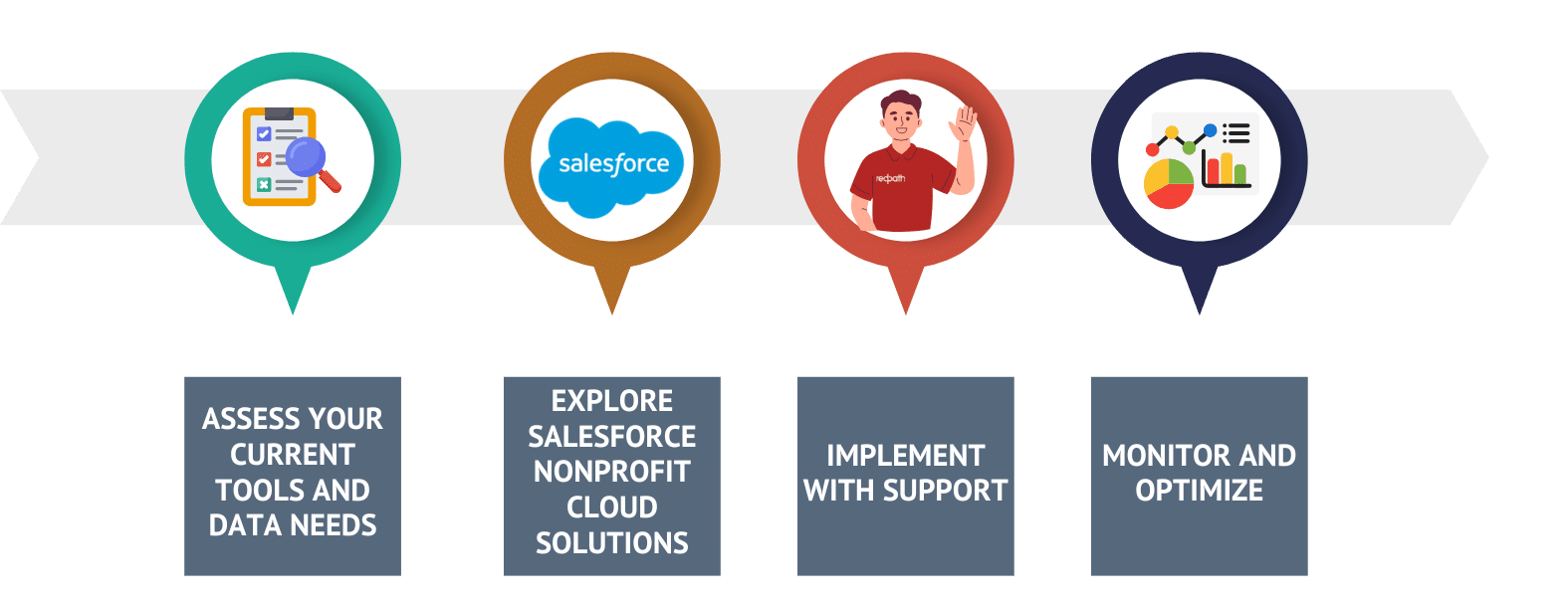From Fragmented to Focused: How Nonprofits Can Break Down Data Silos to Drive Real Impact

Many nonprofits use a mix of tools: an event management software here, a spreadsheet there, a communications tool somewhere else. Each of these point solutions may solve a specific problem, but together they create an incomplete, siloed picture of your organization’s operations and impact.
This blog explores why maintaining these data silos costs nonprofits much more than they might think and how consolidating systems can unlock new opportunities to drive lasting change.
Why point solutions fall short for nonprofits
Using point solutions to address specific needs is a common occurance. These tools are attractive because they’re often easy to implement, relatively inexpensive, and purpose-built for individual functions like tracking donors or managing events. But as nonprofits grow, these solutions can reveal some major drawbacks:
- Data silos limit insights: Each tool holds a fraction of the data you need, making it difficult to get a full understanding of your constituents.
- Extra manual work: Staff spend hours consolidating data from different systems to create reports or insights, leading to inefficiencies and frustration.
- Missed opportunities: Without a holistic view, you might miss connections between donors, volunteers, program participants, and other stakeholders who could enhance your mission.
Consider a typical scenario: your nonprofit learns that one of its major donors also participates in your events and has shown interest in volunteering. With separate systems, this connection might go unnoticed, leaving potential for deeper engagement untapped.
The power of a 360-degree view of your nonprofit operations
Imagine having a single, comprehensive view of each person and organization connected to your mission. This is what a 360-degree view can offer. It’s more than just a convenience; it’s a transformative way to operate.
Why a 360-degree view matters
Identifying key relationships: A unified platform allows you to connect the dots, such as seeing that a volunteer is also a recurring donor or that a corporate sponsor is interested in internship programs for your participants.
Improving engagement strategies: With a complete picture, you can tailor communications, fundraising, and volunteer opportunities to individuals’ interests and histories with your organization.
Better decision-making: Leaders can access real-time data and make informed decisions without waiting for multiple reports to be compiled from different tools.
When your team has access to this kind of insight, you can serve your community more effectively and with greater precision.
How to begin breaking down data silos

Transitioning from fragmented point solutions to an integrated data platform may seem daunting, but it’s a crucial step toward maximizing your nonprofit’s impact. Here’s how to get started:
- Starting the transition to Salesforce might seem challenging, but with a strategic approach, your nonprofit can quickly begin to see the benefits of a unified platform. Here’s how to get started:
- Assess Your Current Tools and Data Needs
- Work with your team to map out which data sources you’re currently using and identify gaps that Salesforce can fill.
- Explore Salesforce Nonprofit Cloud Solutions
- Salesforce offers a range of products designed specifically for nonprofits, including Nonprofit Cloud, which enables donor management, program tracking, volunteer management, and more—all on a single platform.
- Evaluate specific features and integrations that meet your nonprofit’s unique needs.
- Implement with Support
- Many nonprofits partner with certified Salesforce consultants, such as Redpath to ensure a smooth implementation. By working with experts, you can build a setup that’s tailored to your workflows and goals.
- Salesforce also offers training and resources through its Trailhead platform, so your team can learn at their own pace.
- Monitor and Optimize
- With Salesforce’s robust analytics, regularly review your key metrics and adjust your strategies as needed. Salesforce’s continuous platform updates mean you’ll always have access to new features that can further enhance your data integration.
- Assess Your Current Tools and Data Needs
Choosing lasting impact over temporary solutions
Nonprofits have a mission to create change, and choosing technology that supports this mission in a sustainable way is crucial. By breaking down data silos and moving toward an integrated approach, you can unlock a fuller view of your impact, engage more deeply with supporters, and run a more efficient organization.
In the end, choosing a unified platform isn’t just about convenience. It’s about empowering your organization to focus on what matters most: driving real, measurable impact in your community.
With the rapid evolution of technology, Salesforce solutions are ever-changing and improving features. Contact our team for up-to-date information.

